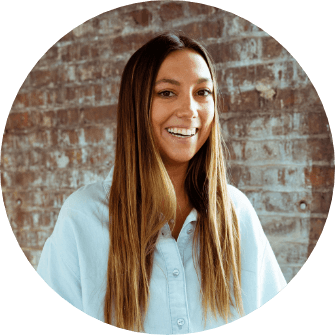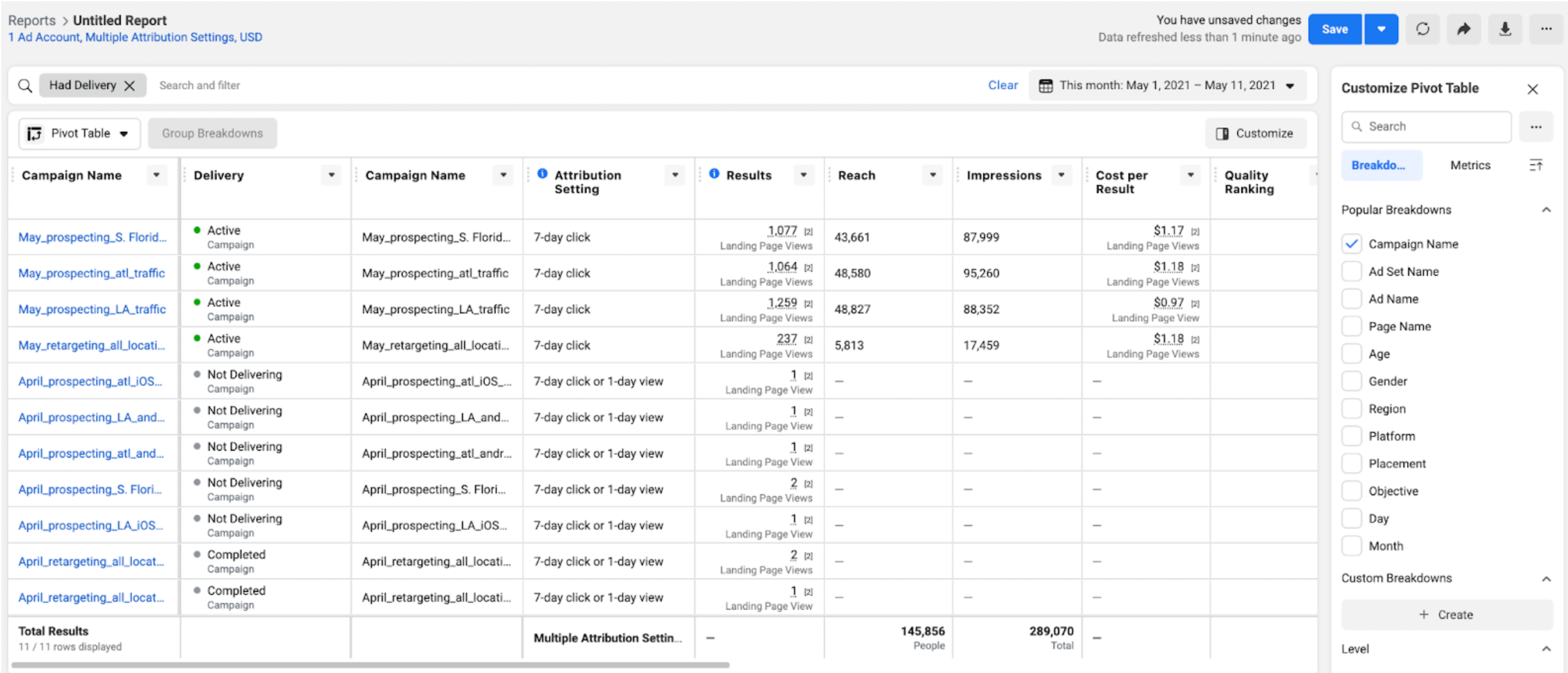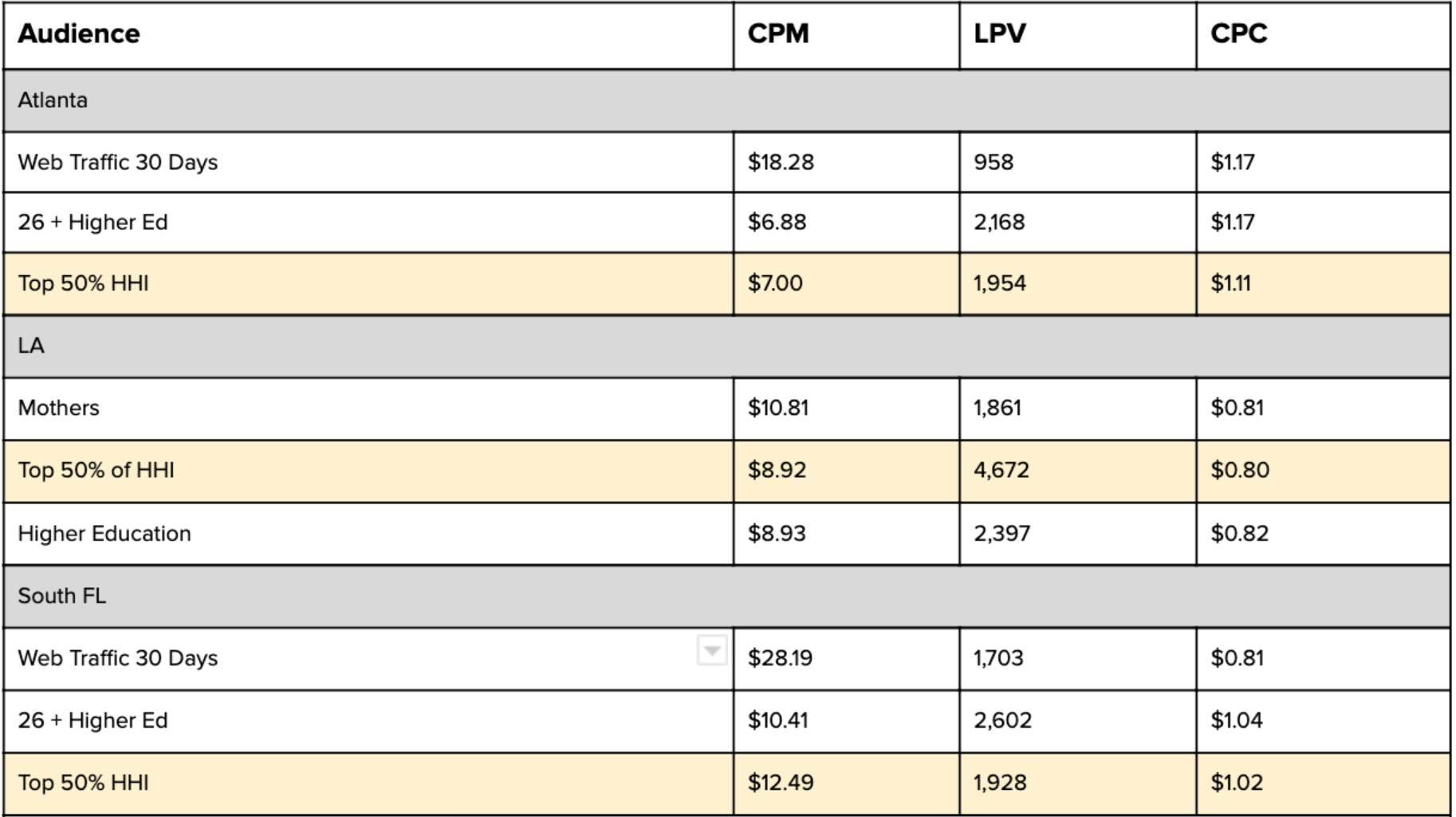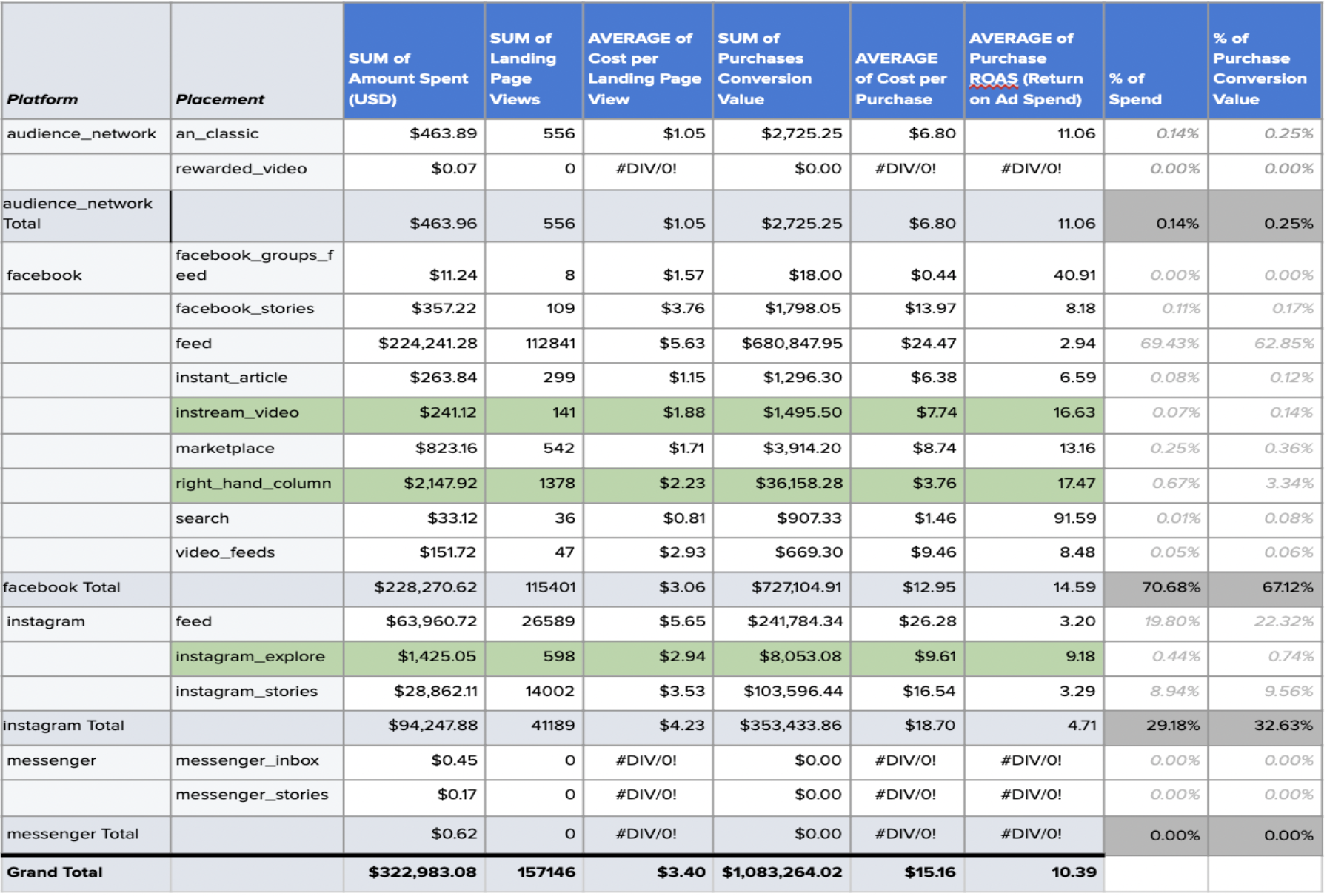Facebook Historical Analysis 101: The How & The Why
So you’ve just signed on a growth marketing team to help you run your Facebook Ads. Now what? Before your social ads strategist can jump in and create a new strategy for your Facebook ads, there’s a crucial first step they’ll need to take to ensure that you’re set up for success.
Keep on reading for a sneak peek into how and why we conduct a historical analysis on all of our new partners’ Facebook Ad Accounts. 👇
What is a Facebook Ad Account Historical Analysis?
If you’ve ever run any social ads, it’s crucial to take a look at previous campaigns and analyze how they’ve performed. Even if you found your previous Facebook campaigns unsuccessful, there is always something we can learn from the data.
At Tuff, a historical ad account analysis is when our channel experts sift through all of the ad campaigns that you’ve ever run on your social media accounts as well as the data from campaigns in your Google Analytics account (given that you were tracking website behavior from your social ads). This historical data allows us to quickly identify a baseline of what success has looked like in the past with social ads for your brand. During this process we will also identify the low-hanging fruit that we can quickly implement to optimize your Facebook results and see improvements right away!
Conducting a Historical Facebook Ad Analysis 101
At Tuff, we use two tools to analyze the results from your previous Facebook and Instagram ad campaigns: Facebook Ads Manager and Google Analytics.
First things first, we’ll create a custom report in Facebook Ads manager analyzing the lifetime data from your campaigns. To do so, you’ll…
- Go to Facebook Ads Manager and click “Create Custom Report” (find it on the right under the drop down menu “Reports”)
- Toggle the time frame to include all lifetime data.
- View your custom report which should look something like this. 👇
1. Facebook & Google Analytics Results
When it comes to identifying key metrics, there’s no one size fits all. You might be an ecommerce brand focused on bottom line revenue, an app or service focused on application installs/subscriptions or a B2B company focused on leads—every brand has their own way of measuring the success of Facebook ads.
However, we do have our own process at Tuff, so in addition to your main business KPIs, we’ll recommend keeping an eye on the metrics below to determine what’s performing well and what’s not.
In Facebook Ads manager, we’ll look at:
- CPA/CAC – Cost Per Acquisition (purchases, leads, subscriptions, app installs, etc.)
- Link Clicks & Landing Page Views
- CTR (Click-Through Rate)
- CPC (Cost Per Click)
- CPM (Cost Per Thousand Impressions)
- ROAS (Return on Ad Spend)
- Video Engagement
Then, we’ll compare the Facebook data to the data in Google Ads Manager, where we’ll look at your website behavior. We’ll look at:
- Last-Click Goals/Conversions (purchases, leads, subscriptions, app installs, etc.)
- Conversion Rates
- Average Session Duration
- Bounce Rate
- Pages/Session
- Users and New Users
2. Audience Analysis
Once we have our campaign results, it’s time to get into the meat of the historical Facebook Ad analysis—drawing insights from all the variants that have been tested to figure out what we’d like to test again and what works best moving forward.
First, we’ll take a deep dive into the audiences you’ve tested and see which audiences are most engaged with your Facebook ads.
When looking at the data from a historical audience analysis of our new partner Dumpling’s Facebook traffic campaigns, and saw that their top performing audiences in all of their key markets were Facebook users who fall in the top 50% household Income of their area.
This learning gave us insight into who their audience was on Facebook, which allowed us to create other audiences targeting similar behaviors and interests as the users who fall in the top 50% household income of their area.
3. Creative Analysis
Creative and copy play a huge role in Facebook ad performance, so it’s extremely important to know what type of images/videos and messaging resonates best with your audience.
We recently conducted a creative analysis for Joyn and learned that videos with high-energy and big movements (like this one) outperformed their videos that were more calm, relaxed and had little movements (like this one).
We also learned that their audience was more engaged in video ads that were created in an actual workout environment rather than video ads created in a studio with a backdrop. Since we’ve rotated in new videos that implemented the data-driven insights from our creative analysis, we’ve seen a significant decrease in Joyn’s cost per subscription from Facebook ads.
4. Placement Analysis
There are a lot of different placements you can choose when building out Facebook Ads and oftentimes, we’ll see our partners choose automatic placements instead of analyzing which placements yield the best results with their audience.
That’s why we always analyze placements in our historical Facebook Ad analysis. For example, when we pulled the data below for our partner VIDA, we discovered that there was a big opportunity to test three new placements (highlighted in the table below) since there was an impression share available that they weren’t currently capitalizing on.
Using Data to Inform Facebook Ad Strategies
Our one final thought we’ll leave you with:
- Paid social strategies without historical data = 🥴
- Paid social strategies with historical data = 🤓
After we’ve created the historical Facebook Ad Account Analysis, we’ll use the data and insights to guide our strategy. The historical analysis saves us and our partners a lot of time on testing things that have already been tested in the past and allows us to focus on what’s working and how we can better optimize what’s working for growth.
Interested in learning more about our process for social ads? Give us a shout!

Hey there! I’m McKenzie, a Growth Marketer at Tuff who lives in Nashville, TN. After years of experience working at agencies in paid media, I found my way to Tuff in 2021 to work with startups, scaleups, and established brands on full-funnel growth strategies rooted in data. When I’m not working, you can find me taking my dog Burley to the park, traveling with friends and family, or winding down at the local yoga studio. Let’s connect.








